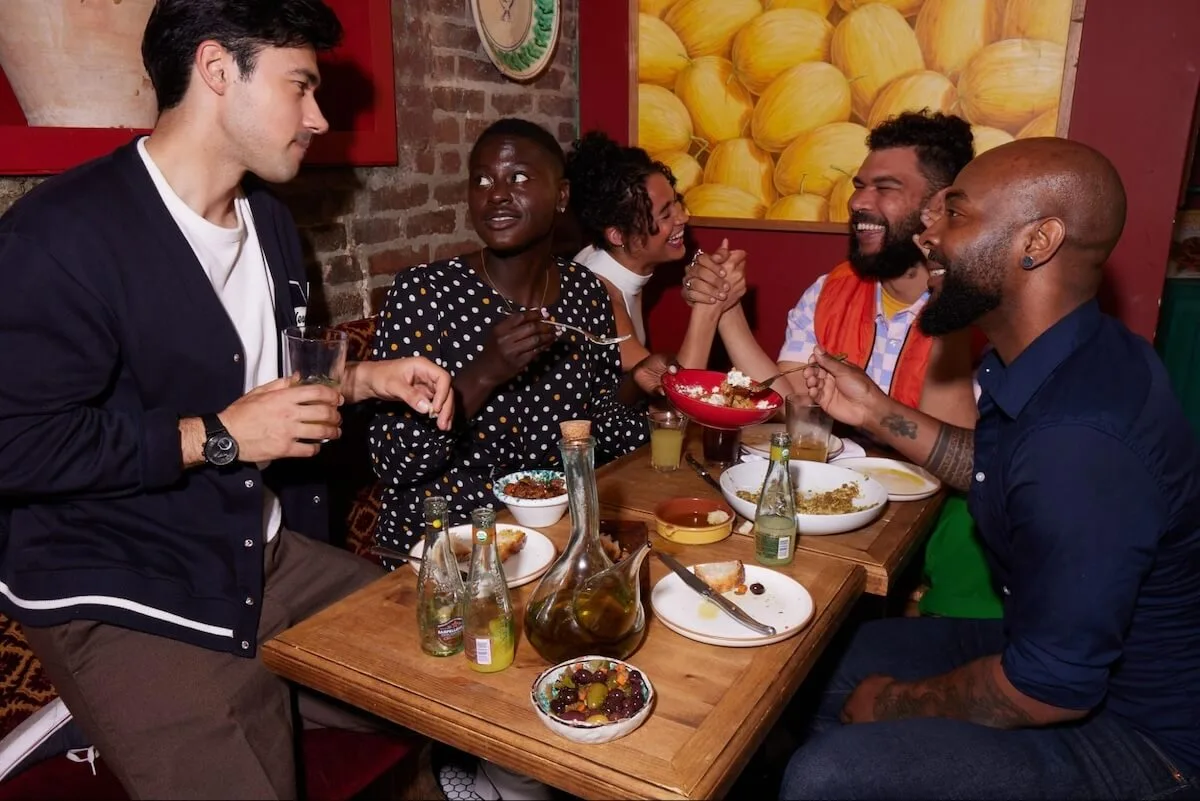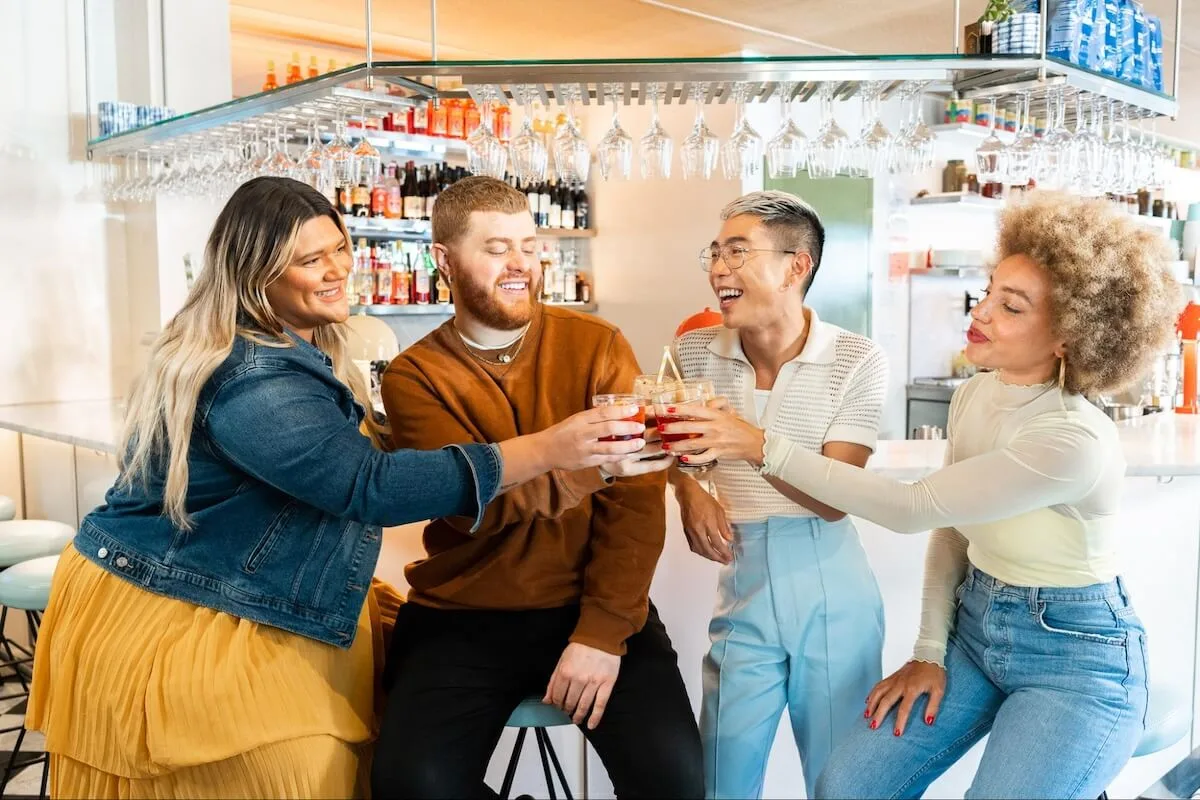How to increase restaurant sales: 10 paths to success
Skip the article and turn takeaways into action by scheduling a call with our team.
We’ve got some groundbreaking news: The point of a business is to sell things at a profit. And because the restaurant business operates under that fundamental principle, restaurateurs must find a way to do just that. But the restaurant industry is increasingly sophisticated, so the ways restaurants can boost their sales and thus bottom line are ever-evolving. If you’re considering how to increase restaurant sales, fear not: There are a whole lot of options, and some of them are even fun.
Successful restaurants branch out and try many different avenues to increase sales, both through tapping into an existing customer base as well as attracting new customers. We’re discussing a competitive industry, so look at what your competitors are doing—and not doing—and think about how you can get a leg up.
If you’re ready to learn how to increase restaurant sales that restaurant owners anywhere can do, keep reading.
1. Revamp your menu

Your menu is the single most important piece of information customers have about you. So, spending time perfecting it and getting it in front of eyeballs is critical. But what does “perfecting” a menu look like?
First, you’ll want to make sure your menu items are delicious. There’s no way around that. If you find that any particular items don’t make the cut, remove them from the menu. You can either ax them from the menu entirely to help streamline your inventory or replace them with something better. Adding new menu items is also an excellent opportunity to try out your marketing strategies, which we’ll get to in a bit.
Second, spend time engineering your menu. We’ve gone into detail on menu engineering, but here’s a quick run down on menu design. Your most valuable items should be towards the top of the page, with your most profitable and premier items at the top right. The top center is also a valuable spot. Place lower-profit items towards the bottom of the menu. Consider pricing strategies like anchor prices, loss leaders, and add-ons.
Third, look at your prices and consider whether your actual food cost is reflected in your menu prices. Since prices of many food items have gone up in recent years, don’t be afraid to nudge your prices up. It may be painful to do so, but it’s far better than losing money. Additionally, it’s often wise to keep prices flat, like $15 instead of $14.99, since the latter feels old and gimmicky.
2. Master social media marketing
Having a strong presence on multiple social media platforms is a must if you want to boost restaurant sales. Image-heavy apps like Instagram and TikTok, for example, can be marketing channels that highlight the visual appeal of your restaurant and tempt potential customers into your door. People are highly visually stimulated by food, so taking beautiful photos of your dishes or making short videos of table service or your kitchen employees working hard can give customers a good idea of what to expect.
To cement your social media presence, we recommend posting at least weekly on all social media platforms. Yelp Connect provides another great way to find customers online and get them in the door. With its huge reach and integration with Yelp Guest Manager, it’s a winning combination that will get you noticed. Restaurants that use Guest Manager paired with Yelp Ads experience 87% more traffic on their Yelp business page.
3. Make sure your online presence is strong
![]()
In addition to social media, you’ll want to make sure your restaurant is easily found. Make sure to have all your information listed on Yelp and claim your page on Google My Business, including contact information, hours, and more.
Having your own website is a necessity that can help you build your online presence. A restaurant’s website should do everything possible to get it to the top of web searches. Navigating search engine optimization (SEO) can seem daunting, but hiring some outside help can drive significant traffic to your site and thus your restaurant. If you’re one among many types of restaurants in an area—like a Mexican restaurant in Topeka, Kansas—coming up first on a Google search for “Mexican restaurant Topeka” can turn into serious business. Staying on top of local SEO is well worth the effort, we promise.
Similarly, keeping a solid email list is great for email marketing. While some would suggest that email marketing is of the past, that’s not so! Solid copy, especially writing that’s original and full of personality can make customers look forward to reading your emails. Tell them about what’s going on in your world, explore new dishes, share anecdotes, and more. You can really build your brand personality in a good newsletter.
4. Sell some merchandise
Got a neat brand, name, or logo? We hope so. Spending some time on thoughtful restaurant branding can help you cement your business in customers’ minds. Once you’ve got a logo, a color scheme, and so on, you can make your own merchandise. Simple things like T-shirts, mugs, koozies, and hats can both boost sales and have customers do some advertising for you, another idea if you’re wondering how to increase restaurant sales.
Best of all: You can use this merchandise for giveaways during special events. Speaking of special events…
5. Host some special events

Hosting special events is an excellent way to build anticipation for a certain day, no matter what that day might be. You can go the traditional route of hosting events on days like Father’s Day or Mother’s Day, but it doesn’t always have to be an official special occasion. For example, partnering with other local businesses can lead to plenty of opportunities for a special event.
Do you sell beers from a local craft brewery? Have a tasting day, or celebrate the release of one of their new recipes. Are you involved in your local art or music scene? Put together a day to showcase some neighborhood talent and draw in customers who might not always be your usual demographic or target audience. Loyal customers will help spread the message via word of mouth for upcoming events, and you should absolutely market the heck out of it, too—whatever you choose to do.
Partnering with local food suppliers and farms can be another great way to host a special event. Let them show off their produce and provide samples.
6. Focus on upselling
Training staff to upsell whenever possible is a time-tested way to improve restaurant revenue. But that doesn’t mean servers need to be pushy and make for a stressful dining experience—rather, servers should be intimately familiar with the menu so they can suggest drink pairings, desserts, or other food pairings that make for a fine combo.
Encouraging servers to upsell by offering bonuses at the end of the month for the most desserts sold, for example, can work to provide an incentive.
7. Build a customer loyalty program

We’ve written about loyalty programs before, but here’s the bottom line: There are a lot more ways to offer a loyalty program than old-school punch-cards. Not that there’s anything wrong with punch-cards—but the options available now are much broader and more rewarding. Loyalty programs can help improve customer retention and foster an intimate customer relationship. Consider offering incentives to join for first-time dine-in customers like a free dessert or cocktail and watch appreciation bloom.
8. Focus on online ordering
Online ordering came into its own during the pandemic, and it seems like it’s here to stay. Focusing on online ordering can tap into a potentially unlimited market—as long as your back-of-house (BOH) can handle the extra traffic. This online ordering can result in delivery or takeout. Both are good news.
Partnering with third-party delivery services is the simplest way to enter the market as they’re so popular and universal. If you focus heavily on delivery like a pizza restaurant does, it’s wise to have your own delivery staff since the third-party services can take a hefty cut.
If you’re looking to up your delivery game, you’ll want front-of-house (FOH) software that integrates smoothly with it. Yelp Guest Manager does just that. Neat, right?
9. Offer a happy hour

If you’re not yet offering a happy hour, doing so can help boost sales in off-peak hours. Most happy hours occur sometime between 4–6pm when service is often slow and customers trickle in before the real dinner rush. Offering discounts on drinks, appetizers, and dishes is a proven method to get customers in the door. You can get creative with a happy hour, too, like making longer or earlier happy hours on the weekends or, alternatively, a reverse happy hour where drink prices are significantly slashed later in the evening. If you’re a restaurant that stays open late, this is a good opportunity to boost nighttime sales when customers might otherwise head to bars.
10. How to increase restaurant sales: Keep up with tech
Keeping your tech in tip-top shape is one of the best ways to make sure your restaurant operations run smoothly—which certainly leads to increased sales. An excellent FOH system helps in all aspects of restaurant management: handling customer interactions, pairing with POS systems, analyzing profit margins, pairing with third-party delivery services, and much more. Of course, we’re talking about Yelp Guest Manager, which gives restaurant owners a wonderful tool without breaking the bank.
A seamless customer experience leads to happy customers. Happy customers tell their friends about their favorite restaurants, and sales grow from repeat business and new customers. The goal of any restaurant should be to turn new customers into regulars, and excellent customer service does that.
Want to learn more about Guest Manager? Reach out to us for a free demo and we’ll show you how it can help boost sales.